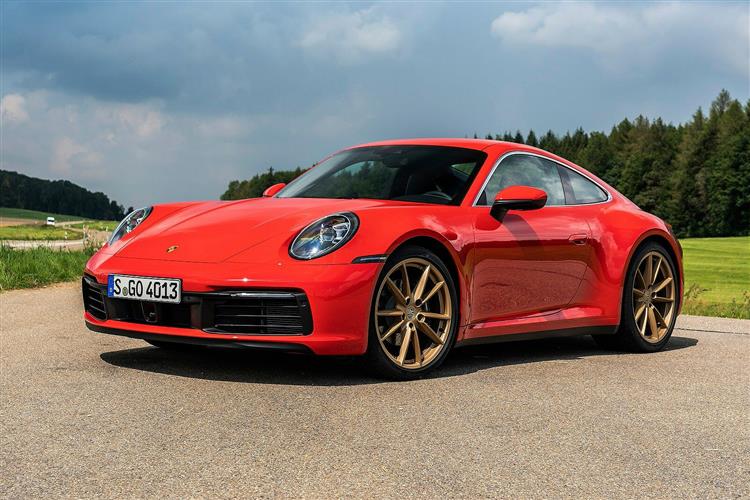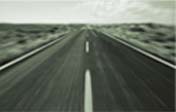How will you view?
This is a sample, showing 30 seconds of each section.
911 COMES OF AGE (some text hidden) SECTIONED_new_porsche911_2019
By Jonathan Crouch
Introductionword count: 121
Porsche's 911 reached its eighth generation in '992'-series form and was bigger, faster, more luxurious and a tad more efficient. Just as you'd want. Most importantly, it was still the most usable super sports car of its kind. Yet somehow also still the most exciting - the most dialled-in 911 we'd seen to date. Only Porsche knows how. Were its enhancements delivered though, without dilution of the magical experience that's served this model line so well for so long? And which 911 will suit you best? Coupe or Cabriolet? Rear or four wheel drive. Business express. Or race refugee? Here's where we look at earlier 2019-2024-era versions of this 992 model from a used buyer's perspective and try to find out.
Modelsword count: 22
2dr sports Coupe / Cabriolet (3.0 Carrera & Carrera4, Carrera S & Carrera 4S, Carrera T, 911 S/T, Carrera GTS, Targa 4)
Historyword count: 454
For more than half a century, there have been sportscars. And then there's been Porsche's 911. Today, you simply wouldn't design a high performance model of any kind like this, engine pitched right back, hung over the rear wheels. Which is exactly why, since it first appeared in 1963, there really has been nothing quite like this car. And probably never will be. Here we look at the 8th generation 992-series version. For this MK8 design, Porsche didn't need to fundamentally change the formula, for in its Cayman model, it already offered a more conventional performance coupe. But it did need to finesse it in the face of growing competition from increasingly desirable high performance alternatives from Jaguar, Mercedes, Maserati and Aston Martin. In short, it did need this rejuvenated 992-series 911, available as ever primarily in Coupe and Cabriolet forms, with most sales based on Carrera-series variants offering a choice of two or four-wheel drive derivatives. Despite what the exterior looks might suggest, this was a lot more than simply an evolved 991-series car. We'd already had that back in 2014, when that previous MK7 model got an update package and an all-turbo engine line-up. So yes, what we got with the 992 was pretty much completely new, though it didn't feel like the kind of completely fresh direction in 911 model development that had characterised some previous models - its 2012-era predecessor for instance or, say, the 996-series model of 1998. The mainstream engines were basically carried over from the revised version of the 991, albeit with more power. And the wheelbase length was the same as the car this one replaces too. To be fair though, not much else was replicated. The subtle exterior re-design clothed a body that was lighter and stiffer thanks to a doubling of its aluminium content. Plus there was a new 8-speed PDK auto gearbox, a higher-class cabin, re-designed suspension, even better brakes and (for the first time) different-sized wheels front-to-rear on mainstream models. Plus, buyers got a lot more technology, including a clever new 'Wet Mode' designed to adapt the drive dynamics to suit slippery conditions. As usual with 911 development, more variants were added to the 992 line-up as time went along; a Targa body style (only with 4WD) and the introduction of the Turbo and Turbo S in 2020; a mid-level GTS model, a sporting GT3 and an entry-level Carrera T in 2021. In 2022, there was a GT3 RS, the Sport Classic and the 911 Dakar; and in 2023 there was the 911 S/T to celebrate the 60th 911 anniversary. The second phase 992.2 models arrived for the 2025 model year, but it's the earlier 992 models that we focus on here.
What You Getword count: 803
It's easy to assume the styling team for the 911 has the easiest job in the world. After all, essentially the same shape has been used ever since the car was originally launched back in 1963 and that continuity is a big part of its appeal. Actually, the 911 has changed hugely over the decades. This 992-series version was a huge 229mm longer than the Sixties original, while also being 20mm longer and 45mm wider at the front than its 991-series predecessor. You'd know the classic silhouette at a glance of course, but if you weren't a 911 brand loyalist, you might not necessarily notice the changes that designate this eighth generation model. For admirers of this car though, they'll be uber-significant. The door mirrors were re-designed and aerodynamically enhanced to reduce wind noise. The lower section of the nose became more horizontally-orientated, emphasising the 46mm of extra front track width that sharpened up the handling, but there was added a rather an expanse of black plastic across the larger intakes, which was arguably less elegant than before. The rear changes were the most controversial ones. The biggest difference actually wasn't the full-width lighting strip, which by 2019 it had become fashionable amongst the so-called experts to dislike. It actually lay in the fact that with this 992 design, it was no longer possible to have the old classic 'narrow' rear bodywork on rear-driven Carrera models, which some of the cognesenti thought was rather a pity. Arguably more important than any of this was what lay beneath the voluptuous panel work. It seems strange to remember that as recently as the 997-series model, just two generations before this 992, 911s were completely crafted from old fashioned galvanised steel. With the 992, apart from the front and rear aprons, the outer skin is entirely made of aluminium. With this 8th generation 911, the interior entered the digital age. Just as it did in the very first 911, the dashboard flows in an unbroken span across the entire width of the interior and feels luxurious, contemporary and extremely stylish. Through the grippy three-spoke wheel lay a defiantly analogue central rev counter, without which a Porsche simply wouldn't be a Porsche. But the two 7-inch read-outs that sat either side of it were actually configurable freeform displays. Just about everything else you needed to know was covered off by the generously-sized 10.9-inch flush-mounted 'Porsche Communication Management' touchscreen display in the centre of the dash. This monitor was of course also multi-configurable, its homescreen based around personalisable 'tiles' you can move about rather like files on a 'desktop' screen of a PC. We could go on and on about infotainment and connectivity here by talking about things like the added 'Track Precision' and 'Road Trip' Porsche apps; and the fact that this car could be permanently online thanks to its integrated LTE-compatible SIM card, which made possible features like 'Radio Plus', an online radio system that seamlessly cuts in if when listening to a station, you leave the range for terrestrial FM or DAB reception. But we won't do any of that because there's lots else of even greater importance to brief you on. The seats for example, which were completely revamped with lightweight construction. In this 992, they place you 5mm closer to terra firma than before and are even more supportive, with a wider base cushion and a backrest that's 20mm higher. With most rival super sportscars from this period - Audi's R8, Aston Martin's Vantage, the Mercedes-AMG GT and McLaren's 540C for instance - this is where we'd be finishing our discussion on the cabin, but the 911 has its reputation as the most practical model in its class to uphold. Hence with this 992 the continued inclusion of the two small rear seats that you had to do without in the brand's 718 Cayman and Boxster models. It's predictably very cramped when you're sat in them, but you'd put up with it in preference to a rainy walk back from the pub - and two small children would be fine over relatively short distances. Porsche redesigned these rear pews with a wider seat cushion and a backrest that's 20mm higher, but they still leave you in an uncomfortably upright position and of course there's next-to-no legroom. The mid-engined configuration of Porsche's 718 Boxster and Cayman models frees up space for a rear boot compartment but of course with the twin turbo 3.0-litre six slung out the back, you don't get that with a 911. Just a little flap that rises to reveal an engine plaque and access to various service reservoirs. That means anything you can't fit inside therefore has to go in the compartment beneath the sculpted bonnet. This is 132-litres in size regardless of your chosen 911's rear-driven or 4WD status.
To see the full road test text contact us on 0330 0020 227
Pictures (high res disabled)

.jpg)
|
.jpg)
|
.jpg)
| |||
.jpg)
|
.jpg)
|
.jpg)
| |||

|
Scoring (subset of scores)
Category: Sporting Cars
| Performance | |
| Handling | |
| Comfort | |
| Space | |
| Styling, Build, Value, Equipment, Depreciation, Handling, Insurance and Total scores are available with our full data feed. | |



